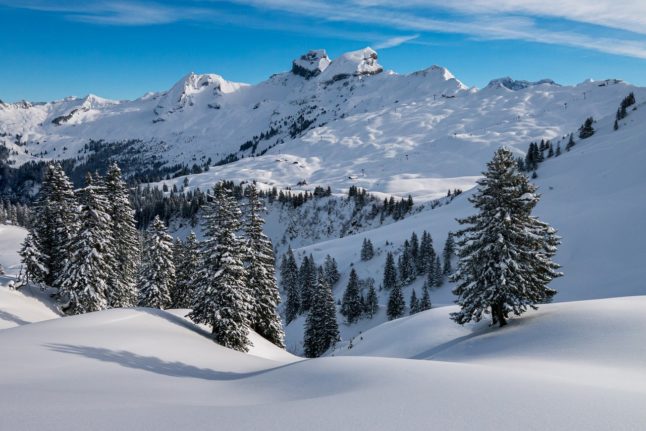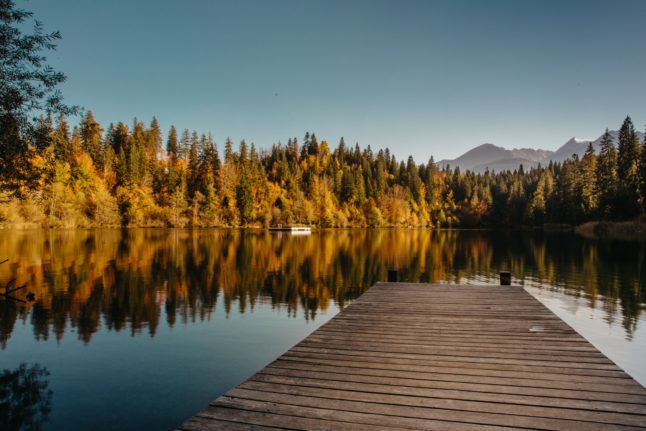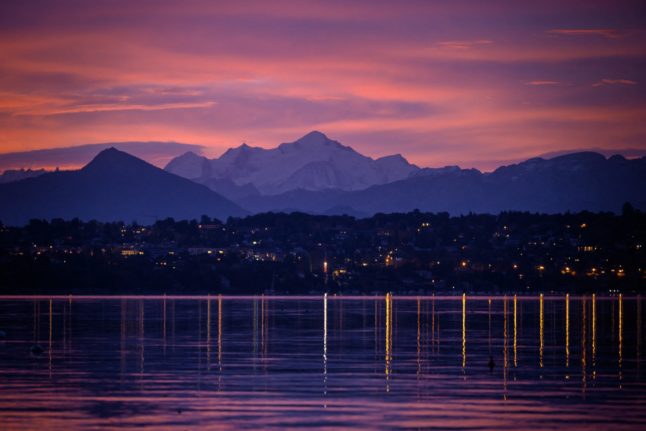Every season in this landlocked country has different activities, colours and charm; Switzerland is picturesque all year round. The postcards are accurate and show that the seasons may change how the landscape looks, but what doesn’t change is the enjoyment and experiences that can be encountered all year round.
Warm sunny summer or cold, snowy winter, fresh, colourful spring or cooler golden autumn – the allure is tangible. Now it is up to you to choose what season or temperature you prefer or wish to experience.
Here are the highlights of each season:
Autumn – September to November
- The leaves, the leaves, the colour of the leaves. Dappled with yellows, reds and oranges, the mountainsides, forests, cities and villages turn their colours to golden hues. View this foliage map to find the most colourful.
- The weather is cooling, the trees are stunning and the summer crowds have started to dissipate or have already left. But, perhaps best of all: things get cheaper.
- Wine season has begun as grapes are harvested and the numerous vineyard walks are both educational and tasty. With the recent hot summer, a good harvest and excellent wine are expected this year in the six wine regions of Switzerland.
- Swiss parks are ready to be discovered and Autumn is a wonderful time to go hiking on the many trails that crisscross the country.
- Witness a famous Alpabzug (Alpine descent), when cows that have been in the mountains for the summer pastures are brought home to their barns in the valleys for winter.
- Oktoberfests also take place in Switzerland and the top ones can be found in Zürich, Lucerne, Winterthur, Baden, Züri-Wiesn and Wädenswil.
READ ALSO: Do Swiss cows really get airlifted down from the Alps after summer?

Winter – December to February
- Sparkling days and shimmering nights can be expected wherever it snows. It can also snow in the cities and towns, which adds a fairy-tale appeal.
- Not only can you partake in the traditional skiing and snowboarding, but there are also myriad other activities for the coldest season of the year: snowshoe hiking, winter walking, nighttime tobogganing, sledding, dogsledding and cross-country skiing. Check out where you can go here.
- There are christmas markets galore and it is almost impossible to name the best: Basel, Zürich, and Bern are at the top of a neverending array.
- Winter rail journeys include the Bernina and Glacier Express and the magical Grand Train Tour of Switzerland – all the superlatives in the dictionary cannot do justice to these trips.
- Ice-skate on natural ice rinks as the lakes freeze over – well-known ones are Davos, Katzensee outside of Zürich and Lac de Joux in Jura.
- Raclette, Fondue, Marroni (chestnuts) and Glühwein (mulled wine) are on the streets and in the restaurants to eat and drink until your heart is content.
- Thermal baths are ready to keep you warmed on wintry days. Suggestions: Mineralbad & Spa Rigi Kaltbad, Dampfbad Basel, Panorama Resort & Spa.
- Wander the streets of cities and villages decorated all wondrous and Christmassy. Montreux, Basel, Zurich and Bern are particularly beautiful and there are also magical light festivals.
READ ALSO: Five beautiful Swiss villages located near Alpine lakes

Spring – March to May
- Wildflowers are blooming the colours of the rainbow in the lush valleys and mountains. Spring has sprung and the cows are heading up the mountains.
- Ski & snowboard tourists have left and the summer crowd haven’t arrived. Therefore, accommodation and travel are cheaper as the resorts are often closed.
- Hiking is worthwhile with lower temperatures and trails are clear of snow up to 2000m. However, the peaks are still snow-capped and enchanting – Mount Rigi Panorama Trail, Berggasthaus Aescher – cliff restaurant or walk part of the Swiss Path and see where the Swiss Confederation began.
- As the snow melt,s waterfalls are plentiful and the vision and sound of icy water gushing down the mountains are impressive. However, beware of flash flooding. Check out Waterfalls in Switzerland.
- Mountain biking is perfect for spring weather and you won’t believe how many trails and tracks there are for enduro, all mountain, tour and e-mountain biking for beginners to advanced riders in every canton.
- City and village tours and lake and river walks at this temperate time are just right, not too cold and not too hot. Check out Ballenberg if you want to see traditional Swiss life all in one place.
- Eleven hours of daylight, mountain areas are still cold with chilly nights but be warned: there can be lots of rain.
READ ALSO: How to keep safe and avoid problems when hiking in the Swiss Alps

Summer – June to August
- Summer is high season and has the most crowds, travel is expensive and resorts are open and full, so make sure you book well in advance.
- Summer also means an abundance of outdoor festivals. They are everywhere: in the cities, in the mountains and by the lakeshores. There is an electic choice including music and art, food and drink, cultural and historical and film.
- For the adventurous, cable cars are open so you can get to the top of the mountains for hiking, paragliding, bunjee jumping, rope parks and toboggan runs.
- If it is hot, and it can get hot hot, it’s another reason to escape to the mountains as there is still snow in some areas all year round, but it can get crowded. Summer snow can be found at Titlis, Jungfraujoch, Zermatt/Matterhorn and Saas Fee.
- On the lakes are pedalos, SUPs (stand-up paddleboards) and innumerable cruises, including paddle-steamers, sailing and panoramic sightseeing.
- Around the lakes, there are options for skating, picnics, restaurants and Badis/Lidos (outdoor pools that can also be found near rivers). Or just wander around and look up at the postcard scenery.
- Escape the heat and visit world-renowned museums and art galleries. Some of the most visited are FIFA Museum, Technorama, Transport Museum of Switzerland, Kunsthaus Zürich and Paul Klee Center, just to start with. Switzerland has a vast choice, with over 900 art galleries and museums.
- Fifteen hours of sunlight to enjoy as much as possible in a day.
READ ALSO: The five most beautiful Swiss villages to discover by boat
Personal factors will play a role in choosing a time of year to visit: travelling with children in school holidays, crowds or no crowds, adventure or culture, active or chilled, hot or cold, sun or snow, a preference of colour – the choices are neverending.
What isn’t a problem is that there is always something to do, and many activities can be mixed and matched all year round. So, in the end, every season is viable and worth a visit.



 Please whitelist us to continue reading.
Please whitelist us to continue reading.
Member comments